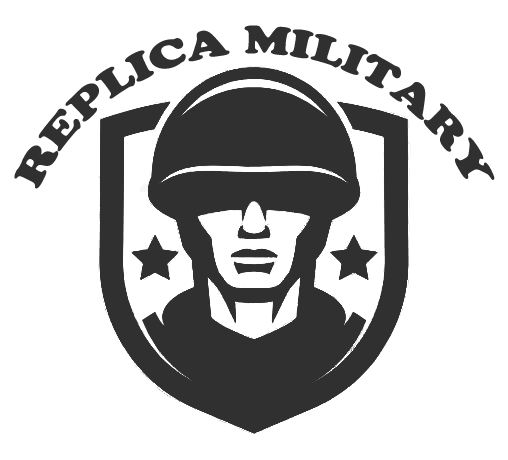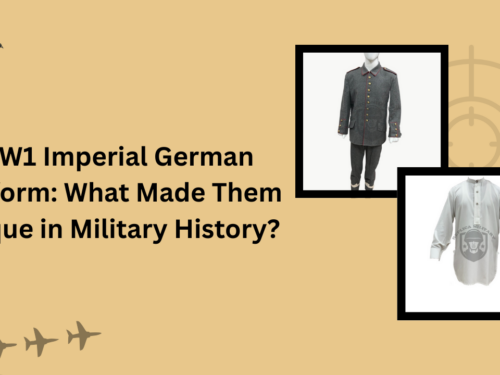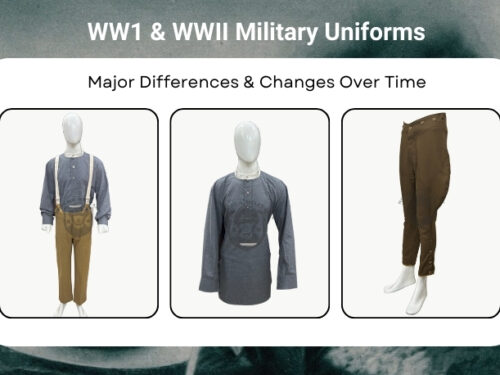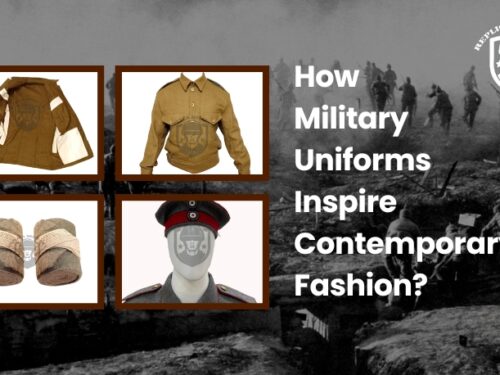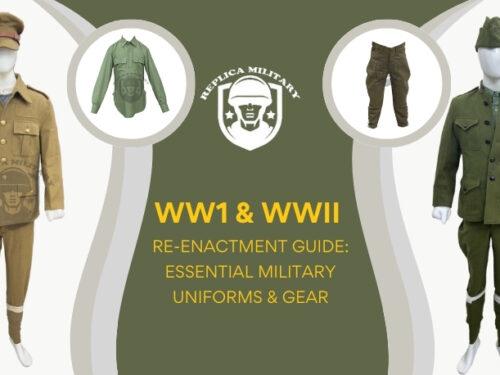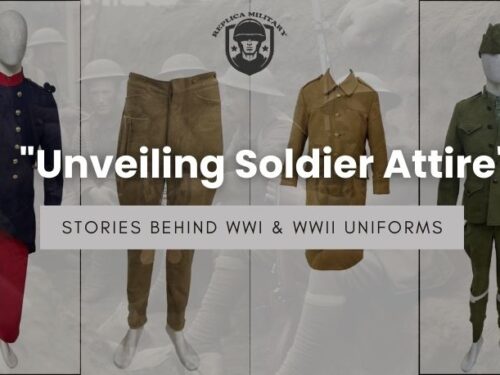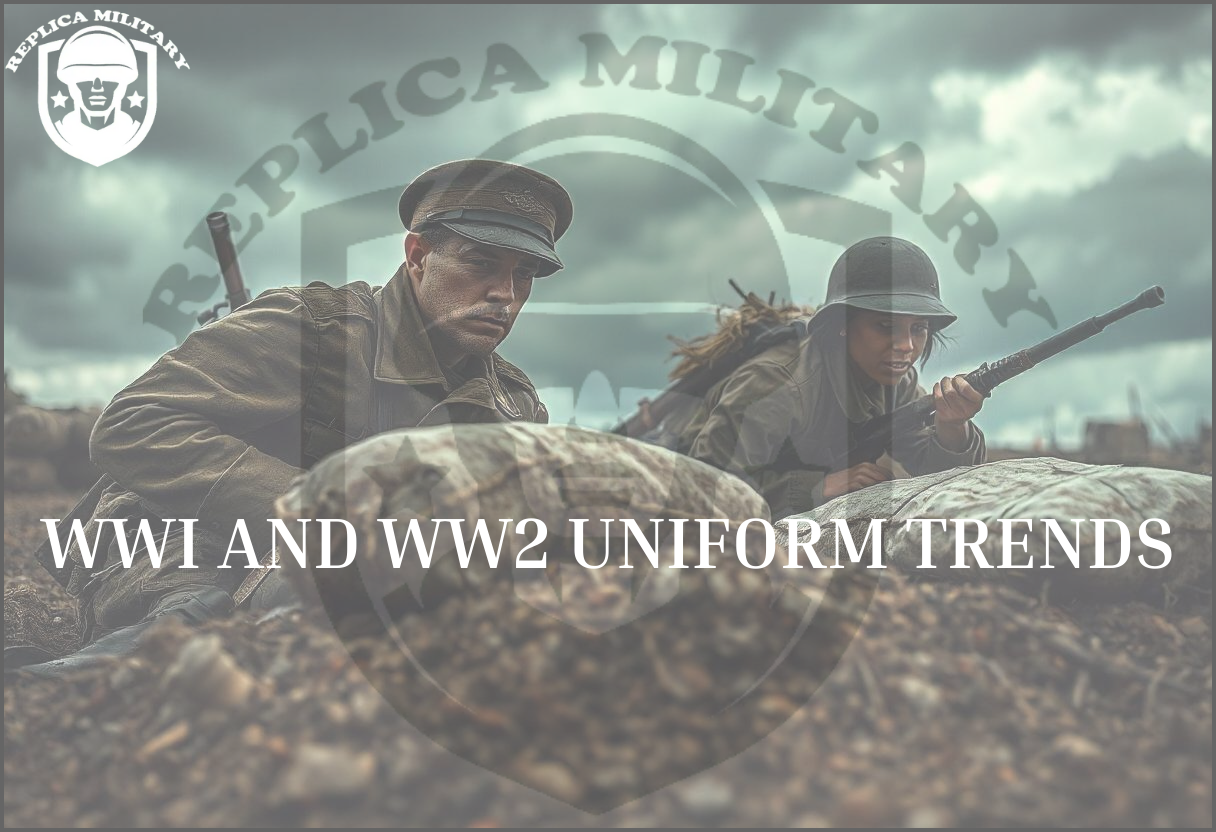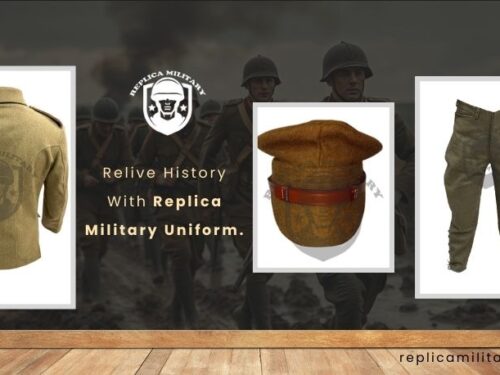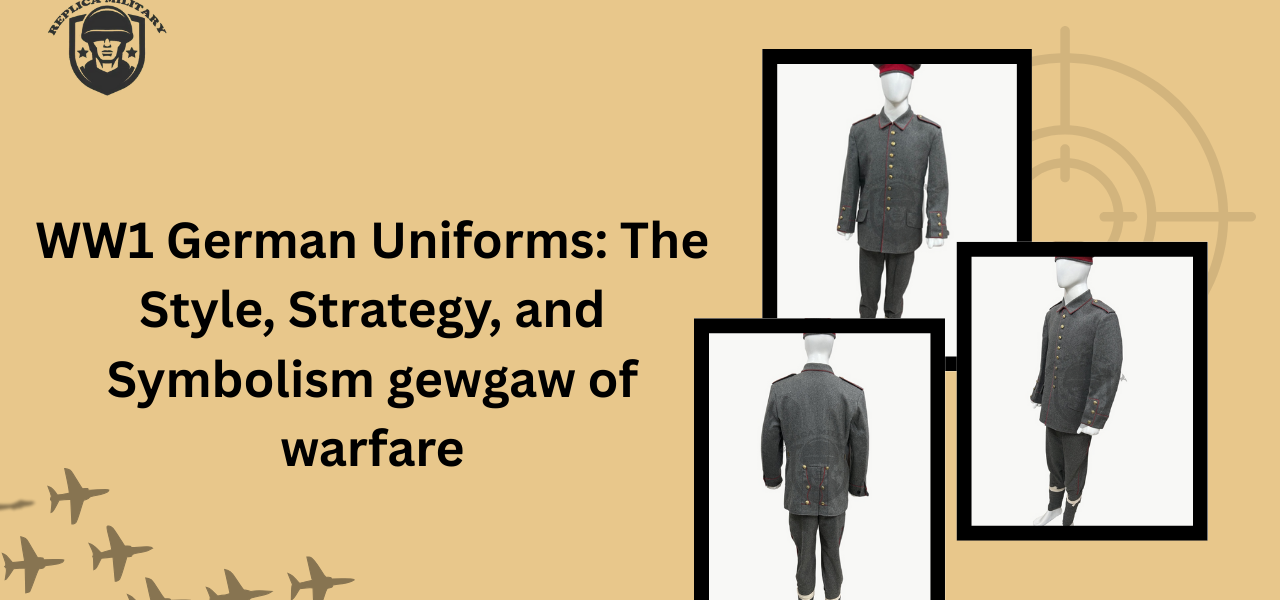
Introduction To World War 1 German Uniforms
World War 1 German uniforms showcase one of the most emblematic and impactful military attires in contemporary warfare. The uniforms were used in various conflicts throughout the world and forged a mix of admiration and insanity. Throughout this piece, I will examine the intricate design, operational efficacy, and history of World War I German uniforms, noting their incredible artistry as well as their multifunctional meaning on society.
Evolution of World War 1 German Uniforms
Pre-War Design Influences
Prior to the start of World War 1, the German Empire had already made significant advancements in developing its military clothing. The outrageous flamboyance was the replaced with practical style and drab colors. The Pickelhaube, a spiked leather helmet, served as a badge of esteem for the Imperial German Army. This change represented a shift from ceremonial garb towards war-ready equipment.
The Introduction of Feldgrau
As the war raged on, the German army adopted the “Feldgrau” (field grey) uniform. This was a more modern version compared to earlier styles. This uniform underwent a significant change in color – to feldgrau – aimed at improving its concealment properties, enabling soldiers to achieve better camouflage on the battlefield. The standard Feldgrau uniform was simple, but it’s austere cut mirrored the harshness of trench warfare.
Explore a Product
World War One Imperial German Uniform
 Style in World War 1 German Uniforms
Style in World War 1 German Uniforms
Key Components of the Uniform
The WW1 German uniforms were based on these simple outlines, which included the following:
- Feldbluse (Field Blouse): A tunic tailored from wool, bedecked with a standing collar and front buttons.
- Trouser: Made in field grey from durable textile.
- Pickelhaube: This ceremonial spiked helmet was used for morale purposes in the beginning of the war.
- Stahlhelm: This later introduced protective helmet displaced the Pickelhaube.
- Puttees and boots: Designed specifically for terrain and long marches.
Rank and Insignia
All German World War 1 uniforms incorporated rank insignia beaten onto shoulder straps, cuffs, and buttons. Officers occasionally sported custom garments made with finer fabrics. Variability of these elements within different ranks enhanced the decorative order within the ranks.
Strategic Function of the Uniforms
Camouflage and Combat Efficiency
The switch to Feldgrau was an answer to modern warfare challenges. These grey uniforms concealed a soldier’s presence much better than the brightly colored uniforms of earlier eras. This was important for both survival and effectiveness.
Material and Mobility
The wool used for the World War 1 German uniforms served a particular purpose: keeping the wearer warm. It was also practical that the uniform’s cut permitted movement during long marches and in cramped trenches. It also had plenty of room for storing personal belongings and ammunition.
Protection and Innovation
Soldiers protecting themselves from artillery and machine guns needed more than just uniforms. A major advancement in military gear was the metal Pickelhaube was replaced with the genuine Stahlhelm, or steel helmet consturcted for the protection against shrapnel and other dangers. This change marked a turning point in military uniform design.
Explore a Product
World War One Imperial German Uniform
The Symbolism Within the German World War 1 Uniforms
A Bound National Identity
The German soldiers of WWII took great pride in their uniforms, as these garments embodied their allegiance to both their Kaiser and the German Empire. The uniforms also had national symbols like the Imperial Eagle and regimental badges, which fostered cohesion and shared motivation among the soldiers.
Morale and Unity
Uniforms served a greater purpose than to simply dress the soldiers; they were also employed as a means to uplift one’s psyche. Apart from identifying an individual as a member of the army, uniforms helped cement a man’s sense of belonging to a greater, united entity—specially against the stark backdrop of individualism. This shift was vital for preserving morale during relentless combat.
Honors and Medals
Such symbols of courage as decorations and medals were regularly added to the uniform on its top part, particularly with officers and order bearers. These marks of valor served not only as reminders of respective individual and unit achievements, but also enhanced trust in abilities and motivation with others.
Alterations of the World War 1 German Uniforms
Branch-Oriented Specific Uniforms
As is common in most militaries, the German armed forces had branch-specific uniforms:
- Infantry: Standard issue plain field grey with no decoration.
- Artillery: Made use of red trimmed piping and certain badges.
- Cavalry: Unique mid-length outer coats with extra tall boots.
- Air Service: Flight jackets and other specialized flight clothing.
Regional Differences
Different German kingdoms(States of the German Empire) and states had their own military customs, which resulted in a uniformed German army with étrangères within various divisions. For instance, World War I German uniforms showed insidious regional variations in cut, tint hues, and even in embellishments. This deviation amongst uniformity distinguished the Germans from the rest of the European powers.
The Legacy of World War 1 German Uniforms
Influence on Future Military Uniforms
The practical Innovations of World War 1 German uniforms had a global reach. Camo designs, resistant material, and the use of steel helmets became the norm in other wars, including World War II.
Collectibility and Historical Interest
Collectors, historians, and even most notable, museums, seek World War 1 German uniforms. Genuinely crafted artifacts, although doesn’t tell a whole story, gives some idea of a soldier’s life and work. Moreover, pieces of such dresses, or replicas, are crafted to be used in films, put on during reenactments, as well as used in educational programs to show haterial to provide historical precision.
Cultural Symbolism
Military anthem of these uniforms reserved places in the silhouette if his Freind and as a reminder of those defeats. They not only serve as a symbol for the advances is technology and tactics of the 20th century, but the empty ration sacrificed while wearing them. The symbol of Germany’s ever/soldier forever dressed in Field grey terrarium fascinated preben by howl bear.
Explore a Product
World War One Imperial German Uniform
Conclusion
The German uniforms in the First World War served a greater purpose than just clothing for the war. They also served a purpose for design, style, and they even helped with symbolization. From changing to Feldgrau for better camouflage and the well known Stahlhelm used for protection, every part of the uniform was crucial. The impact is still obvious in today’s military design and continues to be respected and studied globally.
If you are a historian, a military buff, or just a plain ol’ curious human being, the tale surrounding the World War 1 German uniforms is something that can teach you more about the innovation, culture, and strategies of that specific era.
